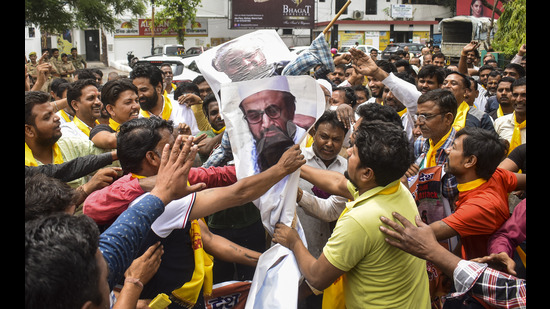The West misunderstands, and misrepresents, nature of Pakistan’s terror policy
The US response to the Pahalgam terror attack shows how little the West understands Pakistan’s weaponisation of terrorism as State policy
I was in the US on the day the Pahalgam terror attack took place. I don’t usually watch television news, but frustrated at being thousands of miles away when this carnage was unfolding back home, in a region that has also been my reporting beat for three decades, I scoured the hotel TV channels and newspapers for some attention given to the cold-blooded execution of 26 tourists who had been targeted for their faith.

If nothing else, the fact that US Vice President JD Vance was in India on the day the barbaric strike took place should have compelled the American media to show interest. After all, the terrorists had most likely timed their plan to Vance’s arrival, borrowing from a 25-year-old playbook. In 2000, 36 Sikhs in the Kashmir valley were massacred in the village of Chittisinghpora as then US president Bill Clinton touched down in Delhi. The intent, then as now, was to draw more international attention to the Kashmir issue, especially as interest in it as any sort of cause célèbre has all but disappeared.
Shockingly, all that was available on US networks were endless hours of programming on Pope Francis. Inner-page reportage in some newspapers was cursory and treated the incident almost as if it were a routine security conflagration. As I hastened to advance my return to India, I explained to those I met that what had happened could lead to a serious military response from India, amid other interventions. This, I stressed, was an act of war. And India would respond accordingly. Most colleagues and friends I would say this to would look at me quizzically. They had barely seen a mention of the Pahalgam terror attack in any media — TV, print or digital — that they consumed.
As Prime Minister Narendra Modi gives a “free hand” to the armed forces to decide on “mode, target and timing of response”, a clearly rattled Pakistan went so far as to declare that India’s attack could be as soon as the next 24-36 hours. A Pakistani minister made an open nuclear threat, saying coarsely, that “nukes had not been made for decoration.”
You would think, by now, the world media would be all over the geopolitical outcome of the story. But no, coverage remained nominal. And worse, in the handful of reports that were published in the initial days, buried in the inner pages of western newspapers, the language used told its own tale — the galling refusal to use the word terrorism for the attack and, instead, a falling back on the more cavalier cliches like gunmen and militants.
Men, women, and little children were riding horses and ponies up the sylvan slopes of Pahalgam when the terrorists struck. Disguised in military fatigues, they executed the men in the group one by one, but only after asking if they were Hindu or Muslim. Several eyewitness accounts now reveal that those who could not recite the Kalma — a declaration of faith in Islam — were shot dead. Helpless wives and children were forced to watch. A local Kashmiri who tried to wrestle with the terrorists and snatch their rifle away was sprayed with bullets.
And this was not terrorism for the western media?
The Resistance Front, a shadowy proxy for the Lashkar-e-Taiba (LeT) took instant responsibility for the attack. Later, as pressure mounted on Pakistan, they incredulously claimed that admission was generated by a cyber hack! The LeT is officially listed as a terrorist organisation by the US. It was also responsible for the 26/11 terror attack in Mumbai in which six Americans were killed. How would Americans feel if Osama bin Laden — eventually taken out by the US from his hiding place in Pakistan — had been described as a gunman?
Now, as India prepares for retaliation, with kinetic action firmly on the table, the West is finally beginning to respond. Some of the statements from Washington have expressed solidarity. But Vance, while urging Pakistan to cooperate with India in bringing the terrorists responsible for Pahalgam to justice, also expressed hope that India would respond in a way that would not lead to a “larger regional conflict”.
The Americans are not likely to play obstructionist to India’s military choices. But there’s still an element of massive doublespeak given that no American politician would have said this to Israel after October 7, 2023, or indeed be able to reconcile their urging of military restraint to India with their own persistent bombing of the Houthis in Yemen.
The world has still not understood that the Pahalgam terror attack is not a localised “security incident” or another manifestation of some sort of ongoing “dispute” between India and Pakistan. It is about Pakistan weaponising terrorism as an instrument of State policy — in Kashmir, but also beyond Kashmir, as the Mumbai attacks of 26/11 will forever remind us.
This time there has been a paradigm shift. India stands on the brink of war with Pakistan. But this conflict, from its very genesis, has been missed, misreported and misunderstood by much of the western media and western governments.
Barkha Dutt is an award-winning journalist and author. The views expressed are personal
All Access.
One Subscription.
Get 360° coverage—from daily headlines
to 100 year archives.



HT App & Website






